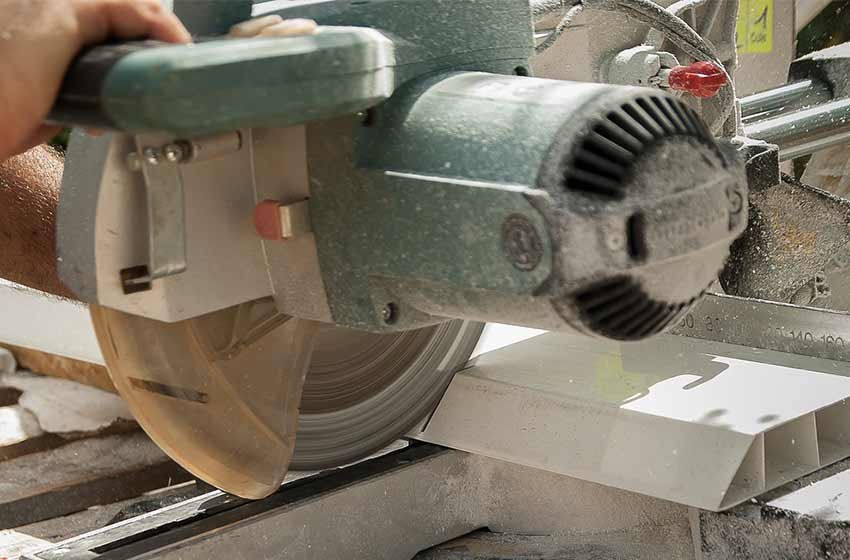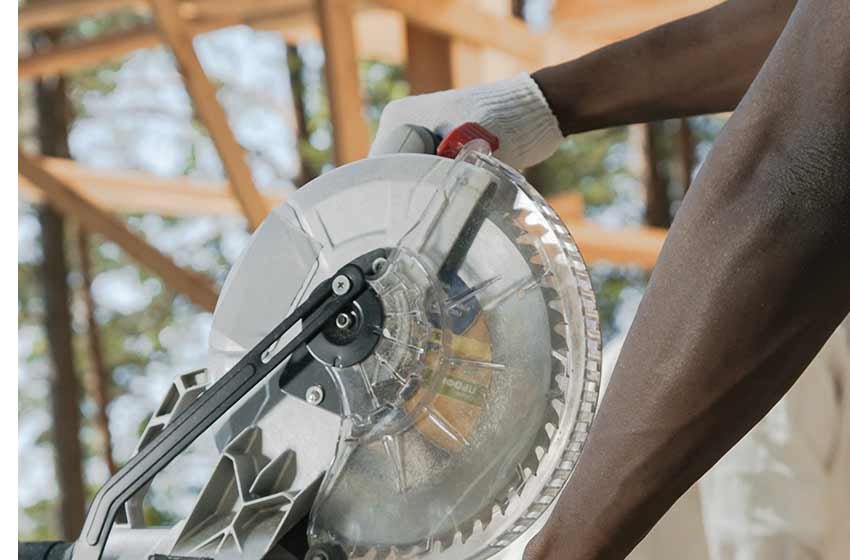Our Best Guide To Making a Plunge Cut With Your Reciprocating Saw
Reciprocating saws are an excellent power tool for demolition work or making rough cuts, whether you want to break down a drywall type of material or cut down pallets to a specific size.
To make a plunge cut with a reciprocating saw you have to ensure you don't use uneven material and your reciprocating saw blade is tilted at a 45-degree angle for the plunge cut, the shoe of the saw must be stabilised against your type of material to ensure an accurate cut.
So as we can dive into more detail about how to make a plunge cut with a reciprocating saw, how these saws work and what other cuts you can use them for, we have put together a short informative guide below.
How Does a Reciprocating Saw Work?
Reciprocating saws are a handheld power tool that is paired with an oscillating blade to cut material, it is named reciprocating as the blade moves back and forth while cutting.
The saw uses thin metal-cutting blades to cut thicker material and has jagged teeth like a jigsaw, the handle allows you to use the narrower blade to cut vertically through horizontal materials. You can slide the metal-cutting blades up and down allowing you to cut easily in awkward areas.
A reciprocating saws aggressive blade means you can use your narrower blade to cut through nearly any kind of material and thicker materials with ease.
The main uses for a reciprocating saw are -
- Cutting through hard materials - The sharp blades on reciprocating saws are typically made out of tungsten carbide, which allows them to cut through all kinds of hard materials, these types of blades lack teeth count.
- Remodelling - Reciprocating saws are best for replacing hacksaws and jigsaws when needed in remodelling, they can help to cut through plaster, window frames and doors.
- Woodwork - For any items made of wood such as longboard or door frames, a reciprocating saw can come into use.
What Blades Should I Use On My Reciprocating Saw?
There is a large blade selection out there for your reciprocating saw which differ in design according to the type of cut and material you are using.
Using the wrong blade is potentially dangerous and can ruin the material you are cutting, so making sure you are using the correct blade is very important.
We have covered the five main types of reciprocating saw blades below.
- High carbon steel blades - HCS blades are very affordable and flexible, you have a low chance of having broken blades with this type of material and they are best suited for cutting wood, broken blades might occur if it overheats as a hot blade will snap.
- Bimetal blade - Bimetal type blades are more heat resistant and longer than high carbon steel blades, these are great for metal cutting.
- Tungsten carbide blades - Tungsten carbide blades are similar to bimetal blades but have carbide tips that increase their strength, making them great for professional and industrial use.
- Diamond blades - Diamond material blades are the strongest type of reciprocating saw blade you can get on the market and they are also the most expensive, for the average DIY, you probably don't need this type of blade.
It should be noted that no matter the type of blade you use on your reciprocating saw, the blade should always be sharp and not damaged, using a dull blade to cut with is dangerous and can ruin the accuracy of your cut.
Our Step By Step To Making Clean Plunge Cuts With Your Reciprocating Saw
Making a plunge cut with your reciprocating saw doesn't have to be hard, so to help you out, we've put together a simple to follow step by step guide that will take you through the type of blade you need and how to do a plunge cut.
- Step one - Select the right blade for your wood surface, there is a huge blade selection out there ranging between wood and nail blades, pruning blades, metal blades and a standard wood cutting blade.
- Step two - Install your chosen blade onto your reciprocating saw and make sure you adjust the shoe, the blade should be at least 1-inch longer than the material you are cutting.
- Step three - Mark your material with a pencil to the cutting guideline you want, then clamp the material so as it is hanging over your work surface.
- Step four - Wear your PPE to protect yourself during cutting and grab the saw with two hands, position the blade on the end of the cutting guideline you made and apply a firm amount of pressure to the shoe so as you can avoid kickback.
- Step five - Pull the trigger and allow the reciprocating saw to come to full speed, if you have the variable speed change it according to your material, for wood this would be faster speed, but for harder materials choose a slow speed.
- Step six - To make a plunge cut, tilt the saw up at a 45-degree and guide it slowly through the material until it is perpendicular and the cut is finished.
Final Words
Overall, making a plunge cut with a reciprocating saw is easy if you are using the right blade and make sure it is clamped down firmly for stability when cutting. These saws need to be tilted to make a plunge cut, and you should always ensure you are wearing the necessary safety equipment to protect yourself when cutting, guiding through the material at a slow speed.














